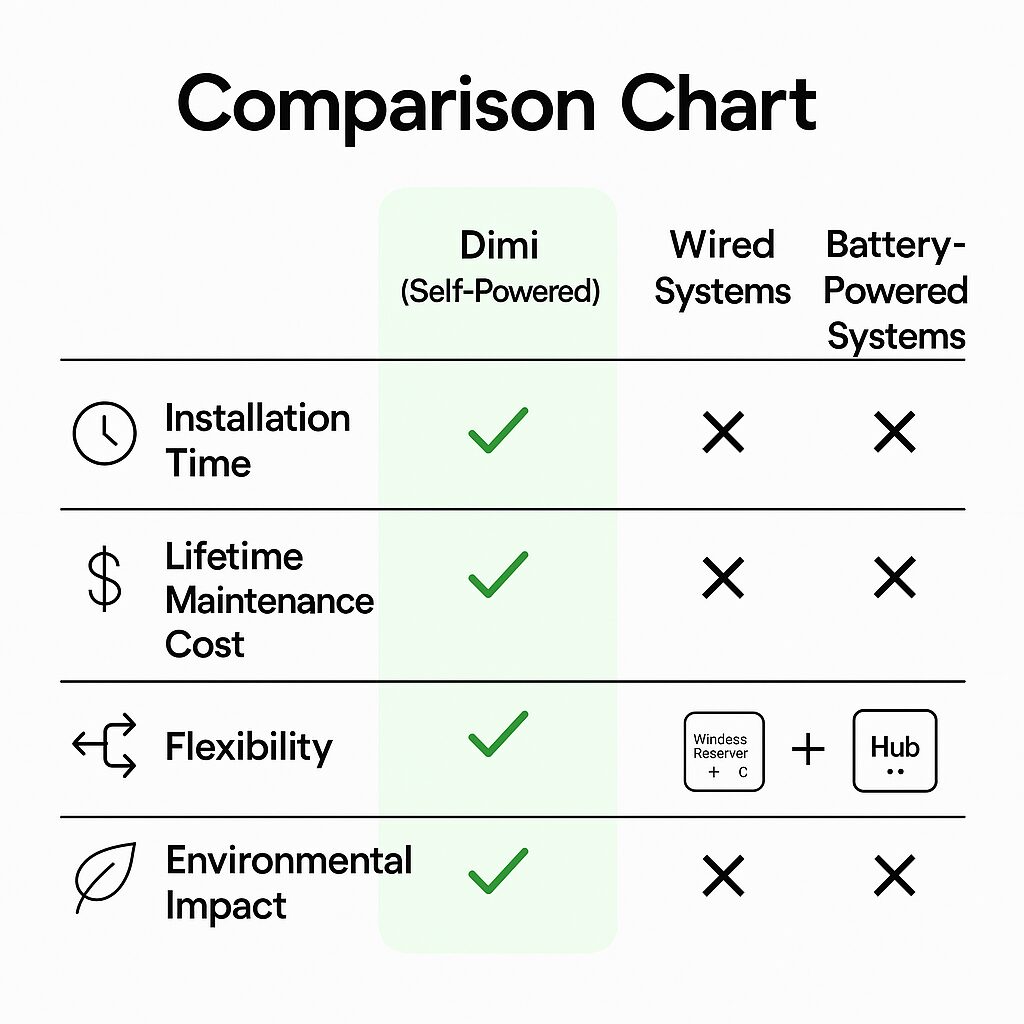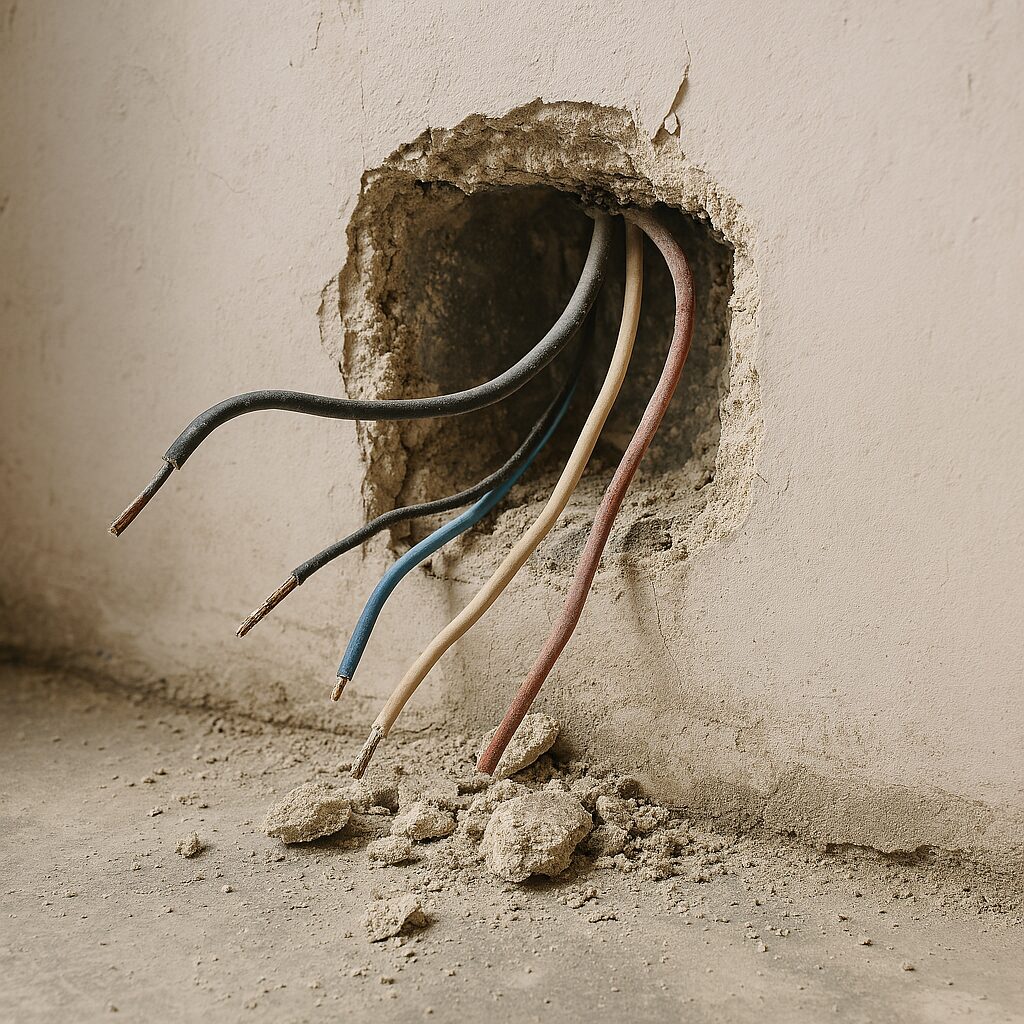< Go Back
Products
Dimi vs. Traditional Smart Systems: What You’re Really Paying For
The sticker price is just the beginning. We break down the true lifetime cost of smart home systems in money, time, and environmental impact.

When you decide to upgrade to a smart home, you’re faced with three fundamentally different technological paths. While they all promise convenience, their impact on your wallet, your home, and your free time couldn’t be more different. Let’s look past the marketing and analyze what you’re really signing up for.
(Visual: The main comparison table infographic as described above.)
Path 1: The Traditional Wired System – The Minor Renovation
This is the old-school standard, requiring a physical wire from the switch to the light.
- The Appeal:It’s seen as the “gold standard” for reliability because it’s hardwired into your home.
- The Hidden Reality: The cost of the switch itself is often less than 20% of the total project cost. The true investment is in labor and remediation. A “simple” installation involves a cascade of costs:
- Electrician Labor:Running new wires is a slow, meticulous job that requires a licensed (and expensive) professional. According to industry data, labor can account for 40-60% of a small electrical project’s budget.
- Material Costs: You’re paying for meters of copper cable and the plastic conduit to contain it.
- Wall Repair: The electrician cuts channels in your walls. You then need to hire a plasterer to patch the damage and a painter to re-finish the surfaces.
- Inflexibility is a Cost: Once installed, the switch location is permanent. If you change your mind or redecorate, you have to start the entire expensive process over.

Path 2: The Battery-Powered System – The Lifetime Subscription to Hassle
This wireless option avoids wall damage, making it seem like the perfect solution.
- The Appeal: Quick to install and wire-free.
- The Hidden Reality: You’ve traded a one-time cost for a recurring one—in both money and maintenance. You’ve signed up for:
- The Battery Treadmill:Every device is a ticking clock. In a home with 20+ smart devices, you could be changing a battery every few weeks. For a hotel with 500 devices, this becomes a full-time job for maintenance staff.
- Environmental Toll: Over 3 billion disposable batteries are thrown away annually in the U.S. alone (Source: EPA), leaching toxic heavy metals into the environment. Each battery change contributes to this massive e-waste problem.
- Unreliability: A dead battery doesn’t just mean an inconvenience; it can be a security or safety issue, rendering a sensor or switch useless until you intervene.
“You trade a one-time installation headache for a lifetime of maintenance.”
Path 3: Dimi (Self-Powered System) – The “Install & Forget” Solution
Dimi was engineered to eliminate the core flaws of the other two systems.
- The Appeal: The wire-free flexibility of battery systems with the “set-and-forget” reliability of a wired one.
- The Reality: It’s as good as it sounds. By harvesting its own power from the press of a button, Dimi offers:
- Zero Installation Damage: Stick a switch on any surface—glass, concrete, tile—in minutes. No tools, no dust, no damage.
- Zero Lifetime Maintenance: With no batteries to change, ever, the system works flawlessly for decades with zero intervention. The operational cost is zero.
- Transparent Cost: The price of the Dimi device is the total cost. There are no surprise bills from tradespeople and no future budget needed for batteries.
Calculate Your Potential Savings
Result: A traditional wired installation could cost you
